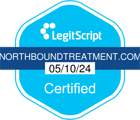Asking what is an intervention can result in some pretty superficial answers. Some think of interventions as isolated confrontations bent on changing the destructive behavior of a loved one.
While there’s some truth in the intent, it doesn’t paint a complete picture of what makes interventions effective. In the following article, we’re going to shed some more light on this popular practice.
We’re also giving you a step-by-step guide for how to improve the odds for success. Let’s begin.
Start by Understanding the “What Is an Intervention” Question
An intervention definitely entails confronting the person whose behaviors you wish to change. But that confrontation can go poorly without the proper planning (before, during, and after).
So let’s take a moment to discuss the elements of planning. Then, we’ll move onto the execution.
The Essential Elements of Planning an Intervention
Every successful intervention can be broken down into six stages of planning. These incorporate logistics, messaging, and flexibility, starting with:
1. Pick a Location
Any discussion of how to have an intervention must begin with where you choose to meet. Locations make a tremendous impact on how the subject will receive your efforts.
Choosing a location where the subject doesn’t feel safe or a spot where they’re likely to be triggered by overwhelming emotions of anger or grief will usually backfire. The messaging itself is too sensitive for the location to detract from that. So choose wisely.
The Centers for Disease Control and Prevention (CDC) offers a resource of best locations for an intervention. These include the following:
- Schools
- Churches
- Playgrounds
- Social service facilities
- Homes
- Workplaces
- Community centers
CDC also suggests best locations related to age group (i.e., parents, children, young adults, and the general population).
2. Choose the Involved Parties
Another prerequisite for how to stage an intervention is to get the right parties involved. Ideally, these will be men and women who have the best interests of the individual at heart.
They could be a parent, friend, family member, trusted colleague, pastor, or mental health professional. In fact, facilitating through a professional treatment facility is a good idea as they’ll offer some much-needed clinical guidance for the often-volatile emotions that go along with an intervention.
3. Define the Problem
The third step you’ll need to take when considering how to do an intervention is to define the central problem. Keep in mind that your loved one may suffer from a variety of issues. But that doesn’t mean the message should be crafted around each and every one.
Trying to do too much too quickly puts the intervention at risk before it begins. It does this by creating a sense of “piling on,” something that can make your loved one feel judged and attacked.
So try to get to the root of the underlying problem. Let that guide you to the next step.
4. Create a Message
Now it’s time to tackle the question of what to say at an intervention. This is different from defining the problem.
Defining the problem is about creating a framework to guide the conversation. Messaging is the conversation itself. It’s where you talk, the subject listens/reacts, and vice versa.
This is where tension ebbs and flows. It’s where things can go wrong and right, sometimes at the same time.
The back-and-forth can get messy. But having a core message can keep things on course through it all and lead to progress.
When conveying the message, it’s best to have a group spokesperson. Also, maintain a sense of order and calm so you’re not escalating any negative emotions that arise with the delivery of your message.
5. Map the Outcome and Aftermath
Okay, truthfully, this is tough to do, especially when the focus of the intervention suffers from a substance abuse problem that negatively impacts their thinking. But as best you can, try to put yourself in the skin of the subject and think about what they’ll say.
Start with the end in mind. What’s the specific outcome you’re hoping for? This foresight gives your intervention group a way to effectively map the outcome.
But don’t think of “outcome” as what happens while you’re in the room. Incorporate the desired steps for after the confrontation portion of the intervention as well. Real change takes time, and most of the progress comes in the aftermath.
6. Prepare for the Worst
There’s a lot of nervous tension prior to an intervention. That’s understandable. After all, you’re working toward changing the behavior of an apparently unwilling party.
Everyone in your group must prepare emotionally for the probability of pushback and even anger. Keeping your cool is essential, but don’t back down. Stay on message and refuse to accept their version of reality.
That’s where the other five steps to the planning stage are so important. If you’ve done your homework, this step will take care of itself.
What You Absolutely Must Avoid
To piggyback on the six steps detailed above, it’s important to point out the group behaviors that can doom an intervention at any point during the confrontation. They are:
- Lack of preparation: if you haven’t clearly defined the problem, you give any excuses the subject comes up with too much credence.
- Judging: throwing one behavior after another without attacking the core problem will cause the subject to shut down. Focus!
- Doing the intervention when they’re in a compromised state: no one impaired from drugs or alcohol is going to listen to reason. So make sure the time is right before you begin.
- Choosing the wrong location: noisy locations or places that invoke a negative emotion from the subject will drown out any sound reasoning you try to deliver.
- Failing to do a one-on-one: approach the subject with love and concern first. Don’t ambush them.
Finally, don’t make the mistake of thinking you can handle everything yourself. Involve a mental health professional.
They’re trained to spot addiction-driven behaviors. And they know how to better respond without escalation.
Time to Make Your Move
Contemplating the question of “what is an intervention?” gives you the tools to follow through. And don’t forget to seek help when needed. Contact Northbound Treatment today if you have a loved one in need of addiction help.
Author
-

President, CEO & Founder at Northbound Treatment Network
Paul Alexander is the CEO, President & Founder of Northbound Treatment Network in Newport Beach, California. He believes wholeheartedly in transformational leadership, organizational health and effective, fully integrated substance use disorder and mental health treatment. With over 27 years of experience in behavioral healthcare, Paul has extensive knowledge of “in vivo” treatment modalities, clinical development, operations, strategy, marketing and financial planning. He has been widely recognized for his development of collegiate-based residential treatment programs for students in recovery and authored a research study at The University of California confirming this modality’s effectiveness.
Paul’s comprehensive professional experience, willingness to innovate, and emphasis on organizational health are vital factors in Northbound’s continued success. Paul received his Certified Addiction Treatment Specialist training at Saddleback College in Mission Viejo, CA, and was awarded Outstanding Alumni Service Award in 2002. Paul holds a Bachelor of Arts degree in Criminology, Law and Society, Summa Cum Laude, from University of California, Irvine, and a Juris Doctorate degree from Loyola Law School of Los Angeles. Paul currently serves on The National Association of Addiction Treatment Providers (NAATP) board. In addition, he serves on The Family Recovery Foundation board and The CarePossible board in Orange County; both organizations are committed to raising funds for family recovery and treatment for former military personnel. Paul is in recovery himself and lives in Orange County with his wife Silvana and his two young sons, Noah and Dean.










